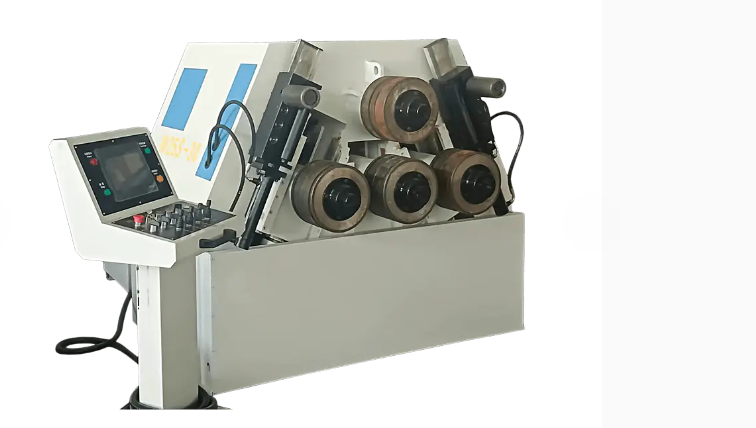Oct 31, 2025
To ensure product quality and precision (Core Reason):
Preventing surface scratches: During the rolling process, metal chips, scale, and dust accumulate on the roller surface. These hard particles can then press into the workpiece surface during subsequent rolling, causing defects like scratches and dents, seriously affecting the product's appearance and quality, especially for high-end materials like stainless steel and aluminum.
Ensuring forming accuracy: Oil and debris can reduce the friction coefficient between the roller and the material, potentially causing slippage or deviation during rolling, affecting the roundness and consistency of the bend.
Maintaining stable equipment operation and precision:
Protecting the hydraulic system: Dust and metal chips that enter the hydraulic oil tank or clog the hydraulic oil filter can contaminate the oil, exacerbating wear on the oil pump, valve block, and cylinder, leading to unstable system pressure, sluggish operation, and even failure. Preventing wear of mechanical components: Debris entering moving parts such as gears, bearings, and guide rails can act like abrasives, rapidly accelerating their wear, causing increased clearance and loss of accuracy.
Ensuring sensor sensitivity: Displacement sensors and pressure sensors covered with oil may transmit erroneous signals, leading to automated control failure.
Ensuring production safety: Accumulated oil and metal shavings are fire hazards. Sparks can sometimes be generated during the rolling process, potentially igniting these combustible materials.
Oil on the floor can cause slips and injuries.
Extending equipment life: Regular cleaning prevents corrosive substances (such as certain metal dust) from rusting structural components such as the bed and rollers, significantly extending the service life of the entire machine.

Cleaning should be done from top to bottom and from outside to inside, and only after the machine is completely powered off and the hydraulic system is depressurized.
Daily/End-of-Shift Cleaning:
Roller Cleaning: Use a copper or nylon brush to carefully remove all metal debris and dirt from the surfaces of the three work rolls. Steel brushes are strictly prohibited to avoid scratching the high-precision roll surfaces.
Machine Body and Worktable Cleaning: Use a broom, brush, or industrial vacuum cleaner to remove large debris and dust from the machine body, guide rails, and surrounding areas.
Oil Wiping: Use cotton yarn or a rag to wipe away oil stains and dust from the equipment surface.
Regular Deep Cleaning and Inspection (weekly or monthly):
Check the oil level and color of the hydraulic oil tank.
Inspect and clean or replace the suction and return oil filters.
Inspect the hydraulic lines and fittings for leaks.
Moving Parts Cleaning and Lubrication:
Clean old grease and dirt from gears, racks, and other transmission components, then reapply new high-temperature grease.
Clean the guide rails and sliders and inspect them for wear. Electrical System Inspection: Have a professional electrician inspect the electrical cabinet and gently blow away any dust inside with dry compressed air. Ensure that the terminals are securely fastened.
Notes:
Do not use high-pressure water jets: Do not use high-pressure water jets to directly flush the equipment, especially the motor, electrical cabinet, bearing housing, and hydraulic system. This can cause electrical shorts, bearing damage, or water intrusion and emulsification of the hydraulic oil.
Use appropriate tools: Avoid using sharp tools to scratch mating surfaces and roller surfaces.
After each shift: Perform daily cleaning, especially of the rollers and work area.
Weekly: Perform a comprehensive cleaning, including the transmission components and guide rails.
Monthly/quarterly: Perform a deep cleaning, including an inspection of the hydraulic system and electrical cabinet, depending on the frequency of use.
Before and after extended downtime: Perform thorough cleaning and anti-rust treatment.